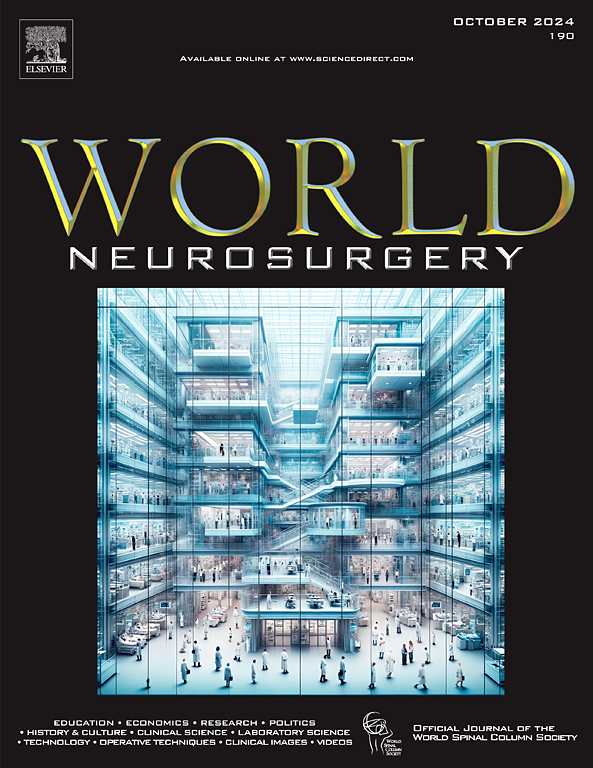3D Quantitative MRI: A Fast and Reliable Method for Ventricular Volumetry
IF 1.9
4区 医学
Q3 CLINICAL NEUROLOGY
引用次数: 0
Abstract
Purpose
Volumetry of cerebral ventricles is a far more sensitive measure for shunt-induced reduction of ventricular size than traditional 2-dimensional (2D) measures, such as Evans index. However, available ventricle segmentation methods are time-consuming, resulting in limited use in clinical practice. Quantitative MRI (qMRI) obtains objective measurements of physical tissue properties, enabling automatic segmentation of white and gray matter and intracranial cerebrospinal fluid. The aim of this study was to evaluate the reliability and processing time of both manual and manually corrected automatic ventricular volumetry through the application of 3D qMRI.
Methods
An independent examiner performed manual ventricular volumetry segmentations on 45 3D qMRI acquisitions (15 healthy individuals, 15 idiopathic normal pressure hydrocephalus (iNPH) patients, 15 shunted iNPH patients) twice. Another independent examiner manually segmented 15 of these acquisitions once. An automatic ventricle segmentation algorithm generated a third set of ventricular segmentations for all 45 data sets. The automatic segmentations were then corrected by both examiners to obtain a fourth set of data. All segmentations were assessed for intra- and interobserver reliability.
Results
Intra- and interobserver reliability for all segmentations, manual, corrected, and automatic, was excellent (intra-class correlation coefficient 1.000, 1.000 and 0.999 respectively). Ventricular volumes were on average 42 ± 18 mL (mean ± SD) in healthy individuals, 140 ± 34 mL in iNPH patients, and 113 ± 35 mL in shunted iNPH patients.
Conclusions
3D qMRI is a reliable and time-efficient method to obtain relevant volumetric measures of intracranial cerebrospinal fluid spaces for both clinical and research purposes. The corrected automatic segmentations provide a feasible time expenditure for clinicians caring for patients with iNPH.
三维定量MRI:一种快速可靠的心室容量测定方法。
本文章由计算机程序翻译,如有差异,请以英文原文为准。
求助全文
约1分钟内获得全文
求助全文
来源期刊

World neurosurgery
CLINICAL NEUROLOGY-SURGERY
CiteScore
3.90
自引率
15.00%
发文量
1765
审稿时长
47 days
期刊介绍:
World Neurosurgery has an open access mirror journal World Neurosurgery: X, sharing the same aims and scope, editorial team, submission system and rigorous peer review.
The journal''s mission is to:
-To provide a first-class international forum and a 2-way conduit for dialogue that is relevant to neurosurgeons and providers who care for neurosurgery patients. The categories of the exchanged information include clinical and basic science, as well as global information that provide social, political, educational, economic, cultural or societal insights and knowledge that are of significance and relevance to worldwide neurosurgery patient care.
-To act as a primary intellectual catalyst for the stimulation of creativity, the creation of new knowledge, and the enhancement of quality neurosurgical care worldwide.
-To provide a forum for communication that enriches the lives of all neurosurgeons and their colleagues; and, in so doing, enriches the lives of their patients.
Topics to be addressed in World Neurosurgery include: EDUCATION, ECONOMICS, RESEARCH, POLITICS, HISTORY, CULTURE, CLINICAL SCIENCE, LABORATORY SCIENCE, TECHNOLOGY, OPERATIVE TECHNIQUES, CLINICAL IMAGES, VIDEOS
 求助内容:
求助内容: 应助结果提醒方式:
应助结果提醒方式:


